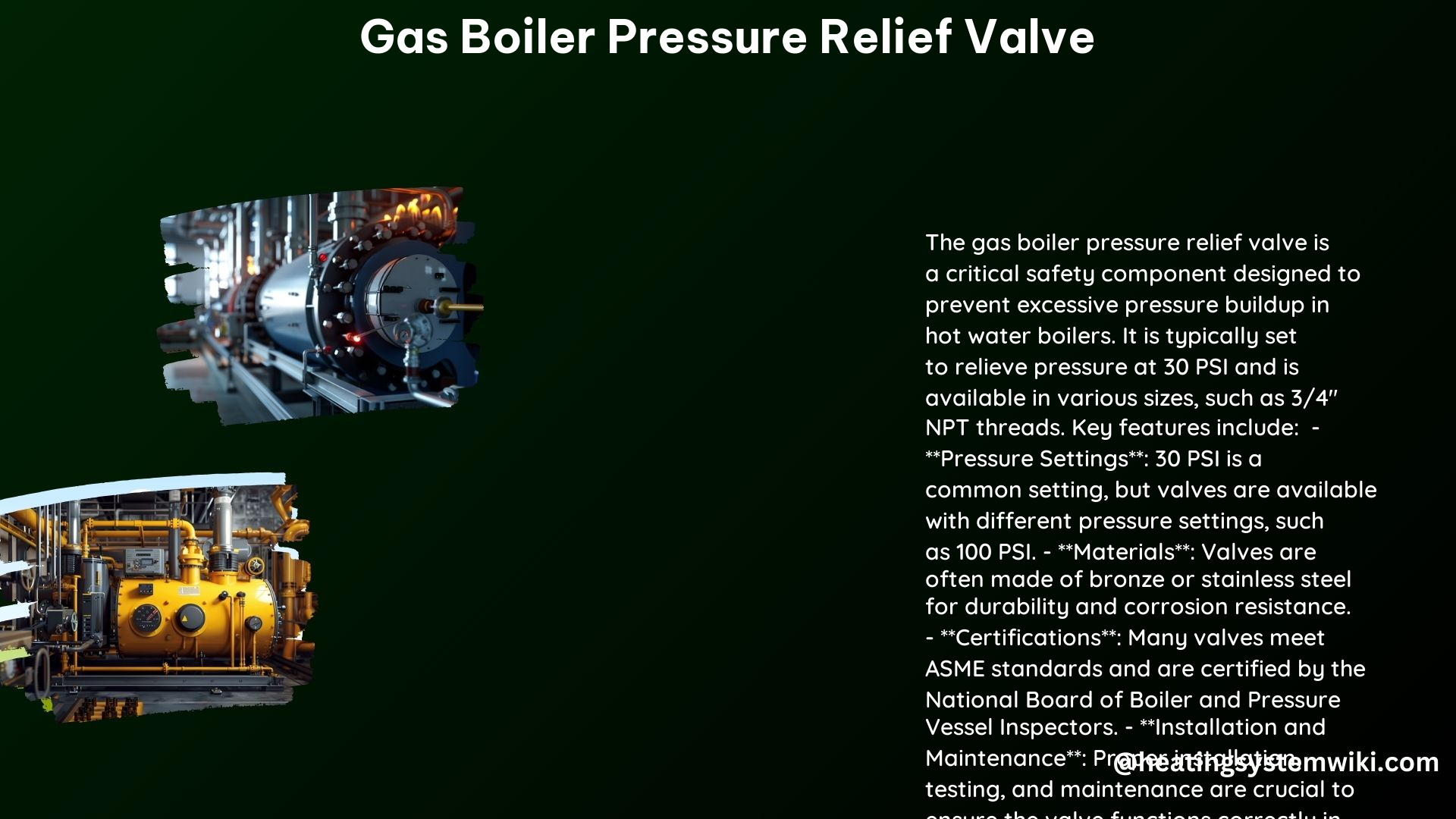A gas boiler pressure relief valve is a critical safety component designed to protect boilers from excessive pressure buildup, preventing potentially catastrophic failures and ensuring the overall safety of the heating system. This comprehensive guide delves into the intricate details and technical specifications of these essential valves, empowering DIY enthusiasts with the knowledge to maintain, troubleshoot, and even replace them as needed.
Function and Purpose
The primary function of a gas boiler pressure relief valve is to release excess pressure from the boiler when it reaches a predetermined level, typically ranging from 30 PSI to 150 PSI, depending on the boiler’s design and safety requirements. This valve acts as a safety mechanism, preventing boiler explosions and leaks by venting the excess pressure to a safe location, such as an outdoor vent or a drain. By maintaining the appropriate pressure within the boiler, the valve safeguards the integrity of the entire heating system, protecting both the equipment and the surrounding environment.
Types of Pressure Relief Valves

There are several types of pressure relief valves used in gas boiler systems, each with its own unique design and application:
- Spring-Loaded Relief Valves:
- The most common type used in household central heating systems
- Consist of a stem/spindle, pressure relief valve cap, calibrated spring, and pressure relief valve seat/seal
-
Designed to open and release excess pressure when the predetermined set point is reached
-
Pilot-Operated Safety Valves:
- Used for boilers with high flow rates and extreme pressure requirements
- Employ a main valve and a pilot valve that work together to release excess pressure
- Offer enhanced precision and reliability in high-pressure applications
Technical Specifications
When selecting or replacing a gas boiler pressure relief valve, it is crucial to consider the following technical specifications:
Pressure Setting
- The pressure setting determines the point at which the valve will open to release excess pressure
- Common pressure settings include 30 PSI, 100 PSI, and 150 PSI, with the appropriate setting determined by the boiler’s design and safety requirements
Material
- Pressure relief valves are typically constructed from durable materials such as bronze, brass, or stainless steel
- These materials are chosen for their ability to withstand high temperatures and pressures without compromising the valve’s integrity
Thread Size
- The thread size of the valve is critical for proper installation, with common sizes including 3/4″ NPT and 1/2″ NPT
- Ensuring the correct thread size is essential for a secure and leak-free connection to the boiler
Certifications
- Pressure relief valves must meet various safety certifications, such as ASME Section I, Section IV, and Section VIII
- These certifications ensure that the valve complies with industry standards and regulations, providing an added layer of safety and reliability
Installation and Maintenance
Proper installation and regular maintenance are crucial for the effective and safe operation of a gas boiler pressure relief valve. This includes:
- Ensuring the valve is correctly sized for the boiler’s capacity and pressure requirements
- Regularly testing the valve to ensure it is functioning correctly and opening at the appropriate pressure
- Replacing the valve when necessary, as recommended by the manufacturer or as indicated by performance issues
DIY Replacement
Replacing a gas boiler pressure relief valve can be a DIY-friendly task for those with basic plumbing skills and tools. However, it is essential to follow proper procedures and safety guidelines to avoid any potential risks. This includes:
- Shutting off the gas and electricity supply to the boiler
- Draining the boiler’s water to relieve pressure
- Carefully removing the old valve and installing the new one, ensuring a secure and leak-free connection
- Restoring the gas and electricity supply and testing the new valve’s operation
Benefits of a Gas Boiler Pressure Relief Valve
The use of a gas boiler pressure relief valve provides several key benefits:
- Equipment Protection: Prevents damage to the boiler and surrounding components due to excessive pressure buildup, extending the lifespan of the heating system.
- Money Savings: Reduces the risk of costly repairs or replacements due to equipment failure, helping to maintain the boiler’s efficiency and reliability.
- Improved Safety: Ensures the safety of people and property by preventing boiler explosions and leaks, which can be hazardous and potentially life-threatening.
- Regulation Compliance: Meets safety regulations and standards for boiler installations, ensuring the system’s compliance with local and national codes.
